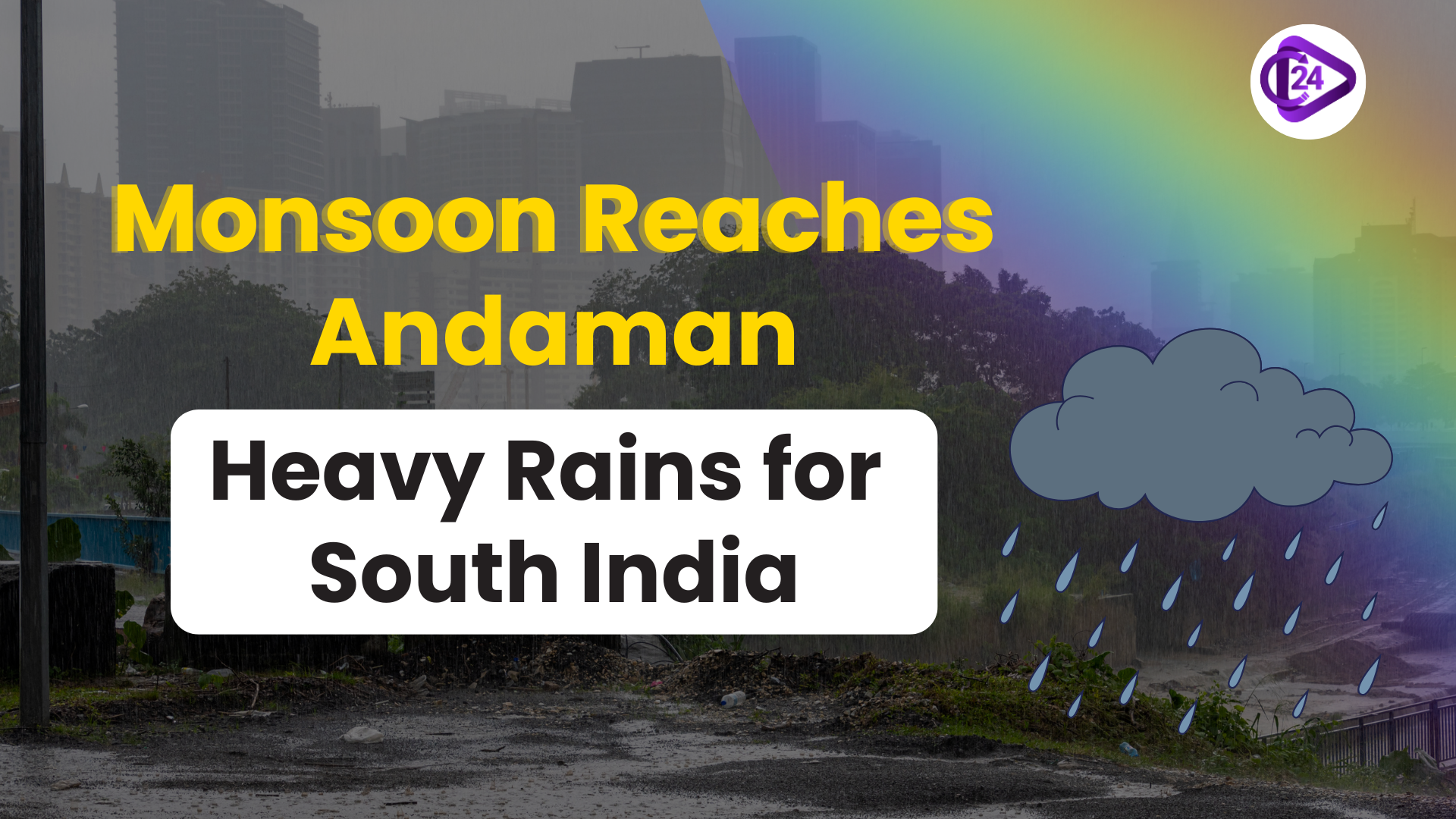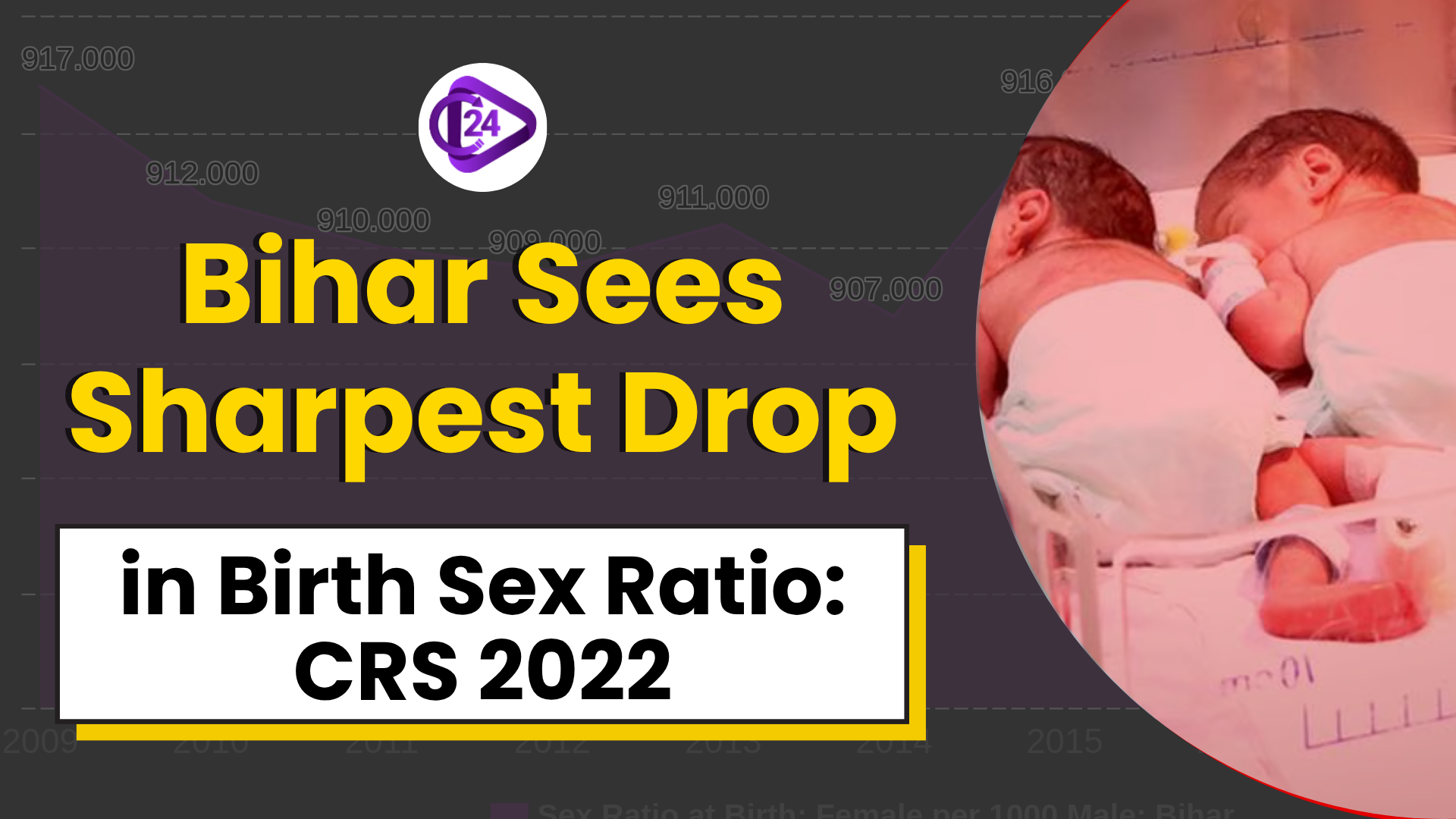
The India Meteorological Department (IMD) reported that the southwest monsoon began its first entry into the Andaman Sea, Bay of Bengal, and Nicobar Islands. This is ahead of schedule, with heavy showers and thunderstorms predicted in central and southern India. Although the monsoon generally takes around 10 days to reach Kerala, no date of onset has yet been declared officially. India will receive more than normal rainfall this year, just like last year.
Key Points:
-
The southwest monsoon has progressed over some areas of the south Bay of Bengal and the Andaman Sea.
-
Heavy to very heavy rain with thunderstorms and lightning is forecast over Andhra Pradesh, Karnataka, Kerala, and Tamil Nadu.
-
The onset date of the monsoon over Kerala is likely to be declared later this month.
-
India is predicted to see "above normal" monsoon rains this year, which is like the 8% above normal rains of 2023.
-
Heavy rain also lies ahead for northeast India over the next five days.
Monsoon Seasons of India
-
Southwest Monsoon:
-
Happens from June to September.
-
Brings seasonal rain, essential for agriculture in India.
-
Comes in two branches:
-
Arabian Sea branch: Comes in from the west.
-
Bay of Bengal branch: Comes in from the southeast.
-
-
-
Retreating Monsoon:
-
Happens during October and November.
-
Characterized by clear skies and increasing temperatures.
-
Heavy rains in southern India were caused by cyclonic depressions.
-
Characterized by "October heat" and heavy rains in eastern parts.
-
Factors that Affect the Formation of the South-West Monsoon
-
Differential Heating:
-
Land heats quicker than water, producing low pressure over land.
-
High pressure over oceans results in wind movement that brings moisture.
-
-
Inter-Tropical Convergence Zone (ITCZ):
-
A region of low pressure close to the equator, moving with the sun.
-
Controls wind patterns and influences the strength of the monsoon.
-
-
El Niño:
-
The reversal of pressure over the Indian Ocean and Pacific Ocean impacts rainfall.
-
Increased ocean temperature can lower rainfall.
-
-
Tibetan Plateau:
-
Severe heating during summer produces strong air currents, which create low pressure in higher altitudes.
-
-
Jet Streams:
-
The Easterly Jet helps bring the monsoon rains.
-
Mechanism of the Southwest Monsoon
-
Onset: The ITCZ shifts north in June, enabling southeast trade winds to take up moisture from the Indian Ocean.
-
Monsoon Branches:
-
Arabian Sea: Carries moisture over Western India.
-
Bay of Bengal: Carries moisture over Eastern India.
-
-
Monsoon Trough: Over the Indo-Gangetic Plain, an area of low pressure develops and is related to rainfall.
Impact of Monsoons on Life in India
-
Positive Impacts
-
Agriculture:
-
About 64% of India's population relies on agriculture.
-
Timely rains are required for planting and reaping crops.
-
Used to recharge dams and reservoirs for water supply and hydro power.
-
-
Regional Differences:
-
Different crops grow in different areas because of varying patterns of rain.
-
-
Negative Effects
-
Unpredictable Rainfall:
-
Floods or droughts can happen because of unpredictable monsoon activity.
-
Heavy rains cause soil erosion and landslides.
-
-
Infrastructure Destruction:
-
Transportation and life get disrupted by floods and landslides, and economic loss is incurred.
-
-
Monsoon Prediction and Challenges
-
Traditional Forecasting: IMD's earlier forecasts used snow cover to forecast monsoon results.
-
Modern Forecasting: IMD employs numerical models and satellite information but continues to have problems with long-term forecasting because of data limitations and large uncertainty.
Recent Initiatives and Future Outlook
-
Monsoon Mission (2012):
-
Focused on enhancing seasonal and intra-seasonal forecasting.
-
Delivers district-level agro-meteorological advisories to farmers.
-
-
International Collaboration:
-
Indo-US Expedition (2018) for comprehending the Bay of Bengal's role in the monsoon.
-
National Supercomputing Mission to increase computing power for precise forecasts.
-
-
Global Warming Impact:
-
Climate change is causing more unpredictable and intense rainfall, and more droughts in certain areas.
-
Way Forward:
-
Water storage for irrigation and hydropower to enhance food security.
-
Investment in improved prediction models and timely advisories for sustainable agriculture.
Conclusion:
The progress of the southwest monsoon into the Andaman Sea marks the start of a possibly heavy monsoon season, with southern India getting substantial rainfall. The forecast of more-than-usual rainfall will be good news for agriculture but also carry threats like flooding and landslides. Monitoring and preparedness are essential to offset negative effects on infrastructure and livelihoods, especially in flood-vulnerable regions.



 Air India Plane Crash: A Setback for Airline’s Revival Plans Amidst Tragic Loss of Over 240 Lives
Air India Plane Crash: A Setback for Airline’s Revival Plans Amidst Tragic Loss of Over 240 Lives India Slips to 131st in Global Gender Gap Index 2025
India Slips to 131st in Global Gender Gap Index 2025 Indian Railways New Tatkal Rules: Aadhaar & OTP Now Mandatory
Indian Railways New Tatkal Rules: Aadhaar & OTP Now Mandatory India Launches ‘Ayush Nivesh Saarthi’ Portal to Attract Investment in Traditional Medicine Sector
India Launches ‘Ayush Nivesh Saarthi’ Portal to Attract Investment in Traditional Medicine Sector Rahul Gandhi Writes to PM Modi, Urges Action on Hostel Conditions and Delayed Scholarships for Margi
Rahul Gandhi Writes to PM Modi, Urges Action on Hostel Conditions and Delayed Scholarships for Margi India Successfully Cultivates Heeng: A Breakthrough in Domestic Production
India Successfully Cultivates Heeng: A Breakthrough in Domestic Production India's First E-Waste Recycling Park to Be Built in Delhi
India's First E-Waste Recycling Park to Be Built in Delhi T Rabi Sankar Appointed Part-Time Member of 16th Finance Commission
T Rabi Sankar Appointed Part-Time Member of 16th Finance Commission 800-Year-Old Pandya-Era Shiva Temple Found in Tamil Nadu
800-Year-Old Pandya-Era Shiva Temple Found in Tamil Nadu Bihar Records Sharpest Decline in Sex Ratio at Birth: CRS 2022 Report
Bihar Records Sharpest Decline in Sex Ratio at Birth: CRS 2022 Report






